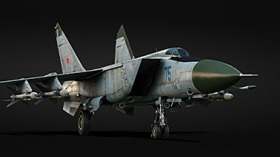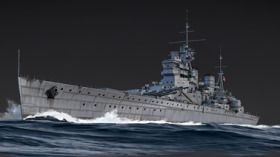
- For PC
- For MAC
- For Linux
- OS: Windows 10 (64 bit)
- Processor: Dual-Core 2.2 GHz
- Memory: 4GB
- Video Card: DirectX 11 level video card: AMD Radeon 77XX / NVIDIA GeForce GTX 660. The minimum supported resolution for the game is 720p.
- Network: Broadband Internet connection
- Hard Drive: 23.1 GB (Minimal client)
- OS: Windows 10/11 (64 bit)
- Processor: Intel Core i5 or Ryzen 5 3600 and better
- Memory: 16 GB and more
- Video Card: DirectX 11 level video card or higher and drivers: Nvidia GeForce 1060 and higher, Radeon RX 570 and higher
- Network: Broadband Internet connection
- Hard Drive: 75.9 GB (Full client)
- OS: Mac OS Big Sur 11.0 or newer
- Processor: Core i5, minimum 2.2GHz (Intel Xeon is not supported)
- Memory: 6 GB
- Video Card: Intel Iris Pro 5200 (Mac), or analog from AMD/Nvidia for Mac. Minimum supported resolution for the game is 720p with Metal support.
- Network: Broadband Internet connection
- Hard Drive: 22.1 GB (Minimal client)
- OS: Mac OS Big Sur 11.0 or newer
- Processor: Core i7 (Intel Xeon is not supported)
- Memory: 8 GB
- Video Card: Radeon Vega II or higher with Metal support.
- Network: Broadband Internet connection
- Hard Drive: 62.2 GB (Full client)
- OS: Most modern 64bit Linux distributions
- Processor: Dual-Core 2.4 GHz
- Memory: 4 GB
- Video Card: NVIDIA 660 with latest proprietary drivers (not older than 6 months) / similar AMD with latest proprietary drivers (not older than 6 months; the minimum supported resolution for the game is 720p) with Vulkan support.
- Network: Broadband Internet connection
- Hard Drive: 22.1 GB (Minimal client)
- OS: Ubuntu 20.04 64bit
- Processor: Intel Core i7
- Memory: 16 GB
- Video Card: NVIDIA 1060 with latest proprietary drivers (not older than 6 months) / similar AMD (Radeon RX 570) with latest proprietary drivers (not older than 6 months) with Vulkan support.
- Network: Broadband Internet connection
- Hard Drive: 62.2 GB (Full client)
Tests in 1948 showed that the Yak-30 successfully combined high speed and excellent horizontal and vertical maneuverability, which allowed it to take on all types of fighters of its time. At the same time, it had an unfortunate wing profile and unsatisfactory aileron compensation. The aircraft did not go into series production, as the MiG-15 and La-15 had already been developed.
At the end of 1948, the Yak-30D was built with an increased fuel and ammunition complement. Aside from the design’s obvious similarities to its predecessor, the aircraft was fundamentally new. The main differences were the newly lightened and hardened wing, increased fuselage length due to the addition of a large-capacity fuel tank, air-brakes, and an altered design for the landing gear and flaps. By the time testing was finished in May 1949, the MiG-15 and La-15 had already entered series production, so the leadership decided that the Yak-30, similar to them in its characteristics, should not be put into production.
 |
 |
Before we begin working on a new aircraft, we spend a huge amount of time studying reference materials – articles about the design, photographs, blueprints and all other available information. In the case of the Yak-30D, it turned out that only three photographs had been made, and there were no blueprints at all – after all, the plane did not enter series production. We had only the schematic drawings of the design, but, although they bore the seal of the Yakovlev design bureau, they were only schematic drawings rather than factory blueprints.
The work was difficult and interesting, and we weren’t able to reconstruct the correct aircraft shape on our first attempt. There were many trials and errors. The design and animation of the fighter’s main landing gear took a particularly long time. But nonetheless, we eventually managed to create a historically accurate Yak-30D, and we are extremely proud of the work we’ve done.
 |
 |
The Yak-30D is a rank 5 jet fighter, placed after the Yak-17 in the research tree. The aircraft’s speed is about 1000 km/h at all altitudes , armed with three NR-23 auto cannons - well known by War Thunder pilots. Despite its not that impressive maneuverability, the fighter may be used in turn-fights, thanks to its air brake. The Yak-30D does great as both a fighter and an interceptor - it is capable of overrunning and destroying almost any target. It’s most useful advantage is that the Yak-30D is a universal fighter that performs equally well at all altitudes. A powerful burst of 23mm cannons shreds even larger bombers to pieces and the ammo load of 225 shells is enough to destroy 5-6 targets without reloading.
The Yak-30D will arrive in War Thunder with the 1.59 update "Flaming Arrows"!
Upcoming content for Update 1.59 "Flaming Arrows" :





Comments (120)
I must say Gaijin did a remarkable job considering the limited resources they had to work with for this aircraft. Also, is there any hope of the Hawker Sea Hawk or some other British jet in the near future?
The MiG's over weight cousin.
lol that is what i thought >>> a fat Mig .... :)
Why not put Yak-23 (313 produced) and Yak-25 (638 produced) first?
Yak-23 appears to be a Yak-15/Yak-17 airframe with improved equipment, which would just make it repetitive. The Yak-25 Flashlight was developed in 1955, while the cutoff date for Aviation is currently 1954. (The Yak-30D, however, appears to be somewhat unique and was developed in 1949)
Didn't cutoff date get boosted to 65 sometime last year?
Will TOG be coming to War Thunder
Me 262 HG II? Ki 201?... Come on Gaijin!
Baby MiG-15
Will this help Balance out some low tier jet fighting ? Right now the vampire and attacker are having bad days fighting mig 15's and 17's.
We don't need another OP Russian fighter. Add the F-100 Super Sabre or something that can actually match the current MiG 17s. This plane is unnecessary.
That misleading title XD
I suggested this plane about 2 years ago and I'm happy to see it coming to War Thunder. It's surprising though that there is so little documentation left about it.
Submit a complaint